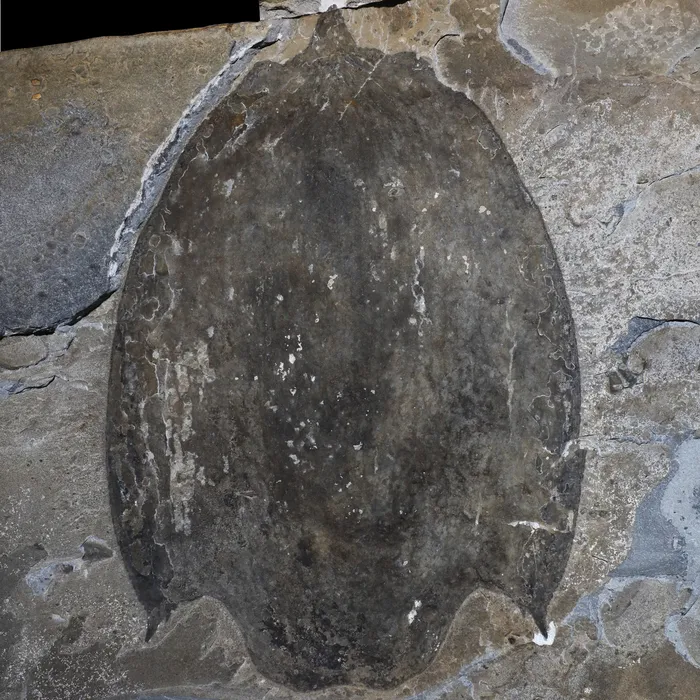Ancient Predator With Massive Helmet-Like Shell Unearthed in Canada
The creature was one of the earliest known large predators on Earth
:focal(246x246:247x247)/https://tf-cmsv2-smithsonianmag-media.s3.amazonaws.com/filer/d4/17/d4173004-2c15-4369-8ddf-d6a9f98dcc97/low-res_titanokorys_reconstructionjpg-1.png)
Paleontologists excavating in Kootenay National Park in the Canadian Rockies uncovered a new fossil species characterized by its enormous head shield and spiny claws for raking through sand, CNN's Ashley Strickland reports. With a pineapple slice-shaped mouth full of teeth, the creature likely hovered above the ocean floor to find prey—similar to the way a Roomba scoots across a wooden floor slurping up dirt, reports Mindy Weisberger for Live Science.
Dubbed Titanokorys gainesi, the species belonged to the now-extinct group of primitive, ocean-dwelling arthropods called radiodonta. The fossil was found among half-a-billion-year-old Cambrian rocks in the Burgess Shale geologic region, which is well-known for exceptionally preserved soft-bodied fossils. T. gainesi was enormous compared to other ocean creatures living during the Cambrian era, measuring almost two feet long during a time when most other species were about the size of a pinky finger, reports Lauren Fuge for Cosmos. The study was authored by Royal Ontario Museum invertebrate curator Jean-Bernard Caron and paleontologist Joe Moysiuk of the University of Toronto and published this week in the journal Royal Society Open Science.
"The sheer size of this animal is absolutely mind-boggling, this is one of the biggest animals from the Cambrian period ever found," says Caron in a statement. "These enigmatic animals certainly had a big impact on Cambrian seafloor ecosystems. Their limbs at the front looked like multiple stacked rakes and would have been very efficient at bringing anything they captured in their tiny spines towards the mouth."
The most significant forms of animal life appeared on the fossil record and showed dramatic diversification during the Cambrian period, which occurred about 541 million years ago and spanned around 40 million years. Also known as the Cambrian explosion, major animal groups such as arthropods, mollusks, echinoderms, and chordates emerged during this time, reports Michelle Star for Science Alert.

Study authors Caron and Moysiuk pieced the colossal arthropod together from 12 fossil fragments, Live Science reports. T. gainesi appeared to have a series of flaps along its body that helped it zoom through open water and a massive head carapace that indicated it was a hurdiid, a helmeted family in the radiodonta group, per Live Science. The carapace was a hard protective shell, like tortoises or crabs, but why radiodonts developed various types of carapaces is not fully understood, Cosmos reports.
"The head is so long relative to the body that these animals are really little more than swimming heads," Moysiuk said in a statement. Based on the size and flat shape of T. gainesi's hard shell covering its back, paleontologists suspect it lived along the seafloor. The specimen would use its claws to stir up the ocean floor, strain out buried prey-like worms, and shovel its meal into its mouth, reports Will Dunham for Reuters.
Diego Garcia-Bellido, a Cambrian period expert at the University of Adelaide who was not involved in the study, told Cosmos that this new specimen provides important information about predators of the ancient underwater world.
"It's like knowing about lions or tigers or great white sharks – they tell you a lot about the whole trophic web," Garcia-Bellido tells Cosmos. "The Cambrian is the time where all of these groups appear – in particular, the anomalocaridids [radiodonts] are the apex predators of the time. And what is becoming surprising is that there's many of them. There's a whole range of very successful groups of these early arthropods."
T. gainesi will be on display at the Royal Ontario Museum in a new exhibit set to open in December 2021 called Dawn of Life, which will showcase the story of life on Earth from its earliest beginnings.
/https://tf-cmsv2-smithsonianmag-media.s3.amazonaws.com/accounts/headshot/gamillo007710829-005_0.png)
/https://tf-cmsv2-smithsonianmag-media.s3.amazonaws.com/accounts/headshot/gamillo007710829-005_0.png)